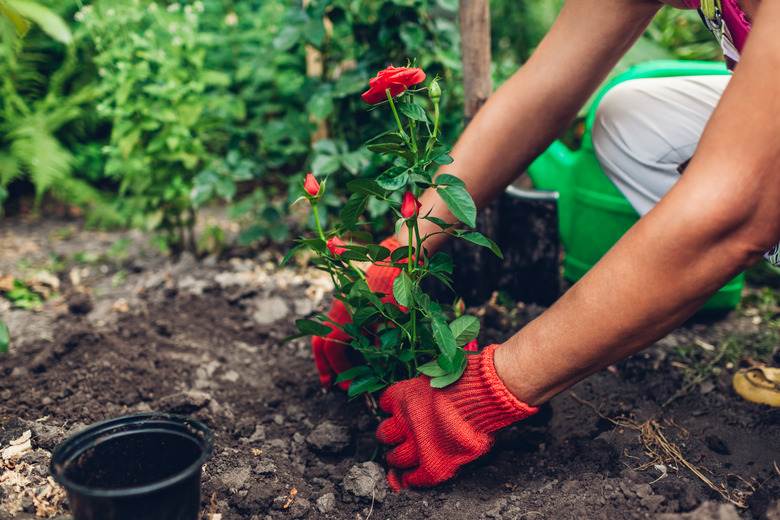How To Clone Roses
We may receive a commission on purchases made from links.
As perennials in USDA plant hardiness zones 2 through 9, depending on species and cultivar, roses (Rosa spp.) can offer a beautiful and fragrant addition to your garden. If you want to grow more of these attractive plants, you can propagate your existing bush via cuttings. Knowing how to take cuttings and encourage them to root is basic to an understanding of how to clone roses. Before taking cuttings to root them, just make sure that the rose not a patented plant; propagating patent-protected plants is illegal.
Taking Rose Cuttings
Taking Rose Cuttings
Selecting the right rose cuttings is key to successfully cloning your rosebush. To give yourself the best chance of success, you want to take your cuttings during the cooler months between November and February, although cuttings can be rooted any time of year. Late fall can be a good option for your first time, as you can better identify any late blooms and therefore choose your ideal cutting.
You should choose cuttings that have bloomed in the previous summer. Use pruning shears to take cuttings of around 6 to 8 inches at a 45-degree angle. Each cutting should have at least four nodes and at least two leaves. Cuttings must be kept moist until they are planted, although it's best to plant your cuttings as soon as possible.
Rose Cutting Propagation
Rose Cutting Propagation
Before planting your cuttings, it can be useful to wound the base of the cutting and apply a rooting hormone. You can wound the stem by peeling back a small piece around 1/8 inch wide and 1/2 inch long at the base using a hobby knife. You can then slightly moisten the end of your cutting and stir it into the rooting hormone powder. Tap off any excess before planting.
Select a potting mix that's suitable for rose cuttings. A good option is a half-and-half mixture of vermiculite and coarse sand that's been thoroughly watered and allowed to drain. You can group your cuttings at 6- to 8-inch intervals or keep them each in separate pots. Use a pencil or dibble to make a hole in your potting mix and then insert your cutting with the base side down. Ensure at least two nodes are underneath the soil but make sure your cutting isn't touching the bottom of the pot.
Caring for Rose Cuttings
Caring for Rose Cuttings
Place your cuttings in an area with bright light but not direct sunlight. You can use a cut-off clear plastic bottle or a clear food storage bag over the tops of your cuttings to increase the humidity by acting as a miniature greenhouse. Keep your cuttings watered but ensure the roots have adequate drainage. You can also mist your cuttings to keep them hydrated.
After 10 to 14 days, your cuttings should have started the process of developing roots, but it will take longer for the roots to be properly established. Make sure you're keeping your cuttings well watered during this period. You may also begin to see new growth at the top end of your cuttings. It's generally a good idea to leave your cuttings to grow for a full year before transplanting them, as any stress can damage and can even kill them.
Transplant your cuttings in late fall or winter and prune off any longer stems to help prevent wind damage. Plant them in areas of bright sunlight. You can apply fertilizer the next spring.
References
- Santa Clarita Valley Rose Society: Improved Techniques for Rooting Rose Cuttings
- University of Illinois Extension: Different Kinds of Roses
- Texas A&M University: Rose Propagation From Cuttings
- Missouri Botanical Garden: Plant Finder Search Results – Genus Rosa
- Home Depot: Take Root Rooting Hormone – Instructions For Use
